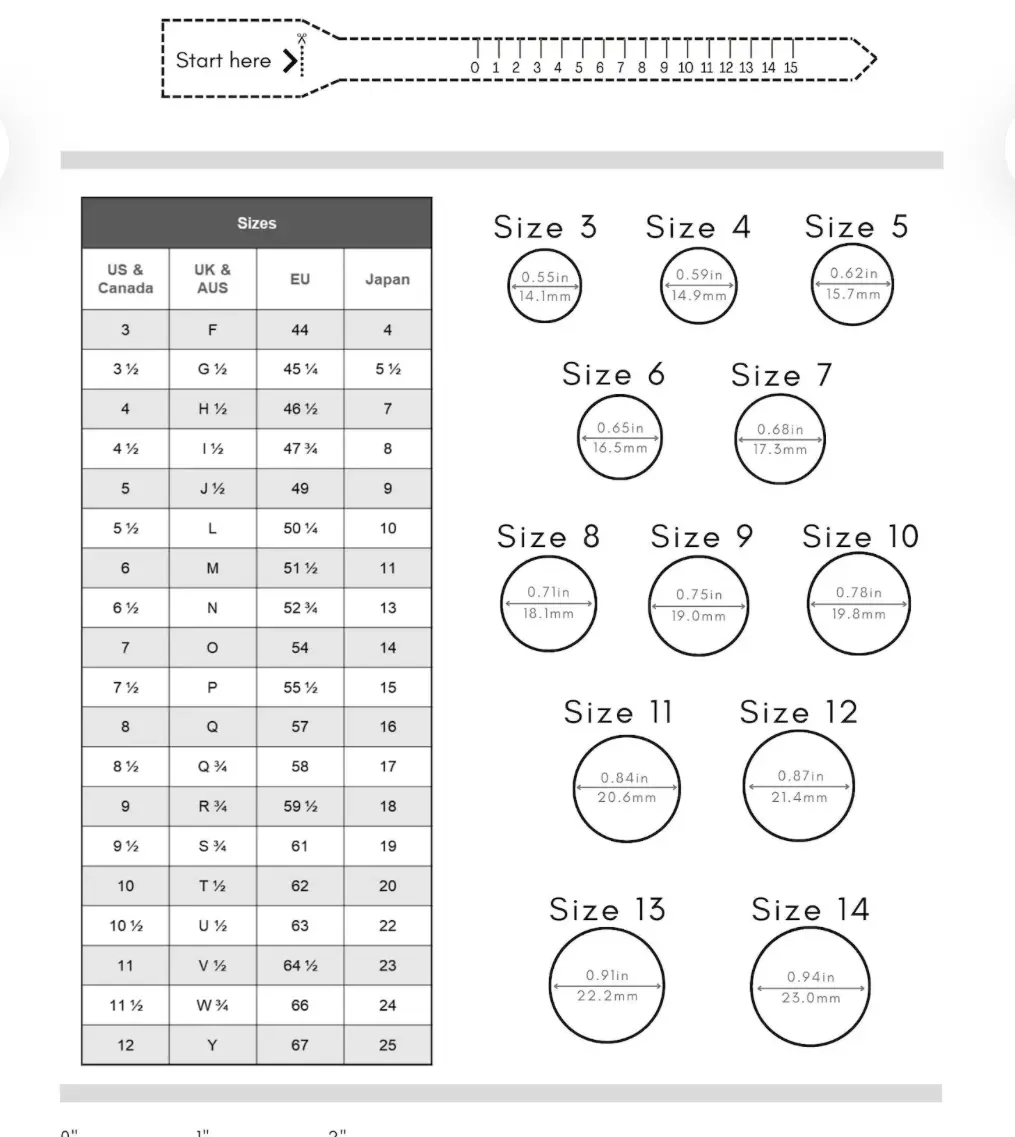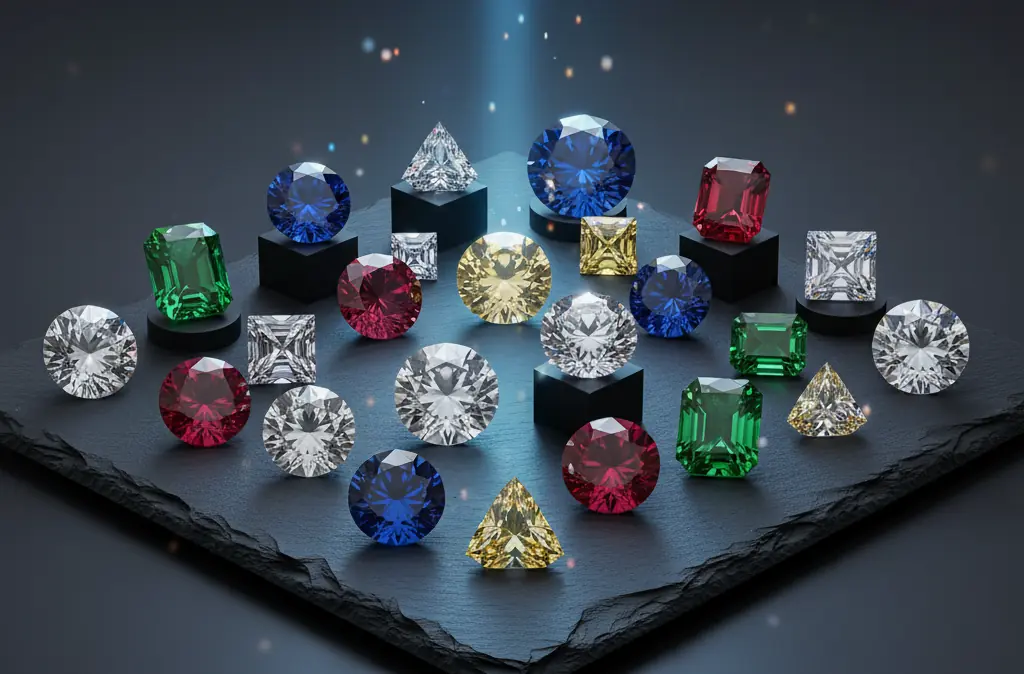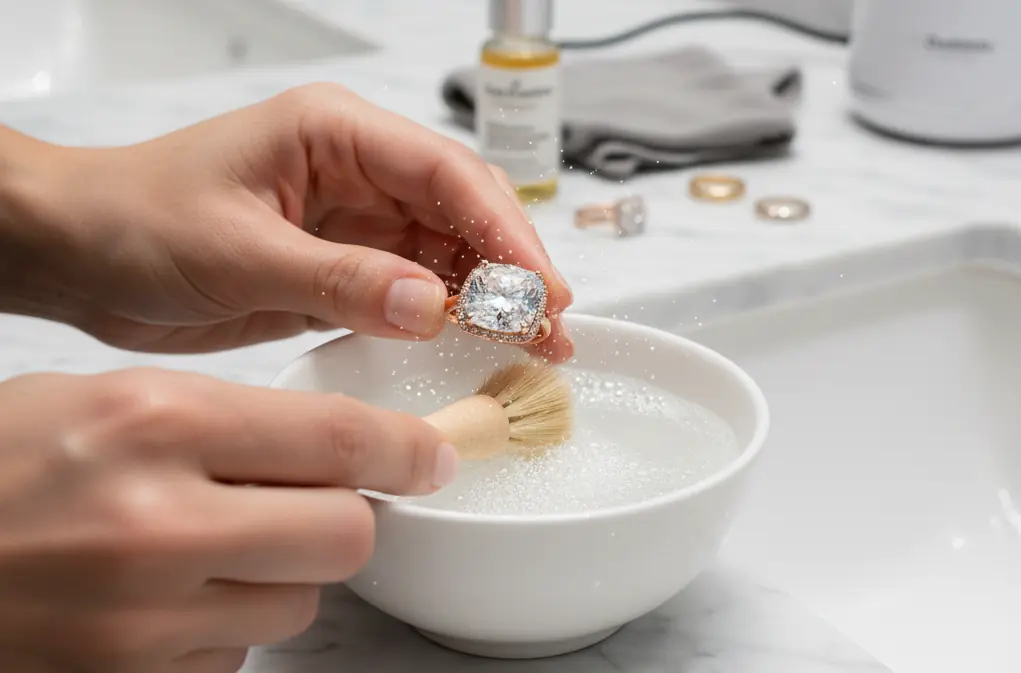Finding the Perfect Fit: A Couples' Guide to Measuring Ring Size at Home
The excitement of selecting an engagement ring or wedding bands is immense, but one of the most crucial steps is ensuring a perfect fit. A ring that's too loose risks being lost, while one that's too tight can be uncomfortable and even difficult to remove. Fortunately, you don't need a jeweler's expertise to get an accurate ring size measurement. This comprehensive guide will walk couples through simple, effective methods for measuring ring size at home, ensuring your chosen symbols of love fit beautifully.
Why Accurate Ring Sizing Matters
Beyond comfort, proper ring sizing is essential for several reasons:
- Security: Prevents the ring from slipping off, especially in situations like washing hands or cold weather when fingers can shrink slightly.
- Comfort: A well-fitting ring is comfortable to wear throughout the day, without causing pressure or irritation.
- Aesthetics: A ring that fits correctly will sit naturally on the finger, enhancing its overall appearance.
- Longevity of Jewelry: While resizing is often possible, it can impact the design and integrity of certain rings, especially those with intricate settings or large stones.
Method 1: Using a Ring You Already Own (The Best Option!)
If the person whose finger you're measuring already wears a ring that fits comfortably on the correct finger (e.g., the ring finger for an engagement ring), this is the most reliable method.
Steps:
- Find a Well-Fitting Ring: Borrow a ring that fits the intended finger snugly but comfortably. If you're unsure, try a few rings the person wears on that specific finger.
- Measure the Inner Diameter: Use a ruler with millimeter markings to measure the inner diameter of the ring. Place the ruler across the widest part of the inside of the ring. Try to get the measurement as accurately as possible.
- Measure the Inner Circumference: Alternatively, you can use a flexible measuring tape or a thin strip of paper. Insert the paper or tape into the ring and mark where it overlaps. Then, measure the length of the marked section.
- Consult a Ring Size Chart: Once you have your measurement (either diameter or circumference), compare it to an online ring size chart. Many jewelry store websites offer printable charts. Remember that most charts are based on circumference.
Tip: If the ring the person wears is slightly loose or tight on the target finger, this method might be less accurate. It's best to use a ring that fits that specific finger perfectly.
Method 2: The String or Paper Strip Method
This method is ideal when you don't have a ring to measure, but it requires a bit more care for accuracy.
Steps:
- Gather Your Materials: You'll need a thin, non-stretchy strip of paper (about 1/4 inch wide) or a piece of string. You'll also need a pen and a ruler with millimeter markings.
- Wrap Around the Finger: Carefully wrap the paper strip or string around the base of the finger where the ring will be worn. Ensure it's snug enough to represent a ring's fit, but not so tight that it cuts off circulation.
- Mark the Overlap: Use the pen to mark the point where the strip or string overlaps.
- Measure the Length: Lay the strip or string flat and measure the length from the end to the mark in millimeters. This measurement represents the circumference of the finger.
- Consult a Ring Size Chart: Use this circumference measurement to find the corresponding ring size on an online chart.
Important Considerations for This Method:
- Knuckles: If the knuckle is significantly larger than the base of the finger, you may need to measure both and opt for a size that will slide over the knuckle comfortably.
- Temperature: Fingers tend to swell in warm weather and shrink in cold weather. Try to measure when the finger is at a normal temperature.
- Accuracy: This method can be less precise than using an existing ring. It's advisable to measure a couple of times to ensure consistency.
Method 3: Using a Printable Ring Sizer

Many online jewelry retailers offer printable ring sizers. These often come with a ruler to ensure you print them at the correct scale.
Steps:
- Download and Print: Download the printable ring sizer from a reputable jewelry website. Ensure you print it at 100% scale without any page scaling options. Use a ruler to verify the printed scale.
- Cut Out the Sizer: Carefully cut along the indicated lines of the sizer.
- Use the Sizer: Follow the instructions on the sizer. Typically, you'll slide a portion of the sizer through a slit and then place your finger inside the loop. Pull gently until it fits snugly, and read the corresponding size.
Tip: Double-check that the printed sizer is accurate by measuring the printed ruler with your own ruler.
Additional Tips for Couples Measuring Ring Size
Measuring ring size at home can be a fun and intimate part of the engagement or wedding ring selection process. Here are some extra tips:
- Measure Multiple Times: For the string or paper method, take measurements at different times of the day to account for natural fluctuations in finger size.
- Consider the Ring's Width: Wider bands tend to fit more snugly than narrow bands. If you're measuring for a wide band, consider going up a quarter to half a size.
- Don't Guess: While a surprise is lovely, a precise measurement will prevent the disappointment and potential cost of resizing.
- Stealthy Measurements: If you're planning a surprise proposal, try to get a ring the person already wears on their left ring finger and use it for Method 1. Alternatively, if they're asleep, you can carefully measure their finger with a string or paper strip, but be very gentle!
- When in Doubt, Size Up Slightly: It's generally easier and less damaging to resize a ring down than up.
- Consult the Jeweler: If you're very unsure, it's always best to err on the side of caution and consult with a professional jeweler. They have the tools and expertise to provide the most accurate measurements.
Understanding Ring Sizes
Ring sizes are typically expressed as a numerical value, representing the inner circumference of the ring in millimeters. For example, a size 7 typically corresponds to a circumference of approximately 54.4 mm.
Common Ring Sizes for Women and Men
While individual finger sizes vary greatly, here are some general ranges:
- Women: Most common ring sizes range from 5 to 7.
- Men: Most common ring sizes range from 8 to 10.
Remember, these are just averages, and it's crucial to get an accurate measurement for the individual.
The Joy of a Perfect Fit
Selecting an engagement ring or wedding bands is a momentous occasion. By taking the time to accurately measure ring size at home, you ensure that the symbol of your commitment is not only beautiful but also a perfect, comfortable fit for years to come. Happy measuring, and congratulations on your journey together!



